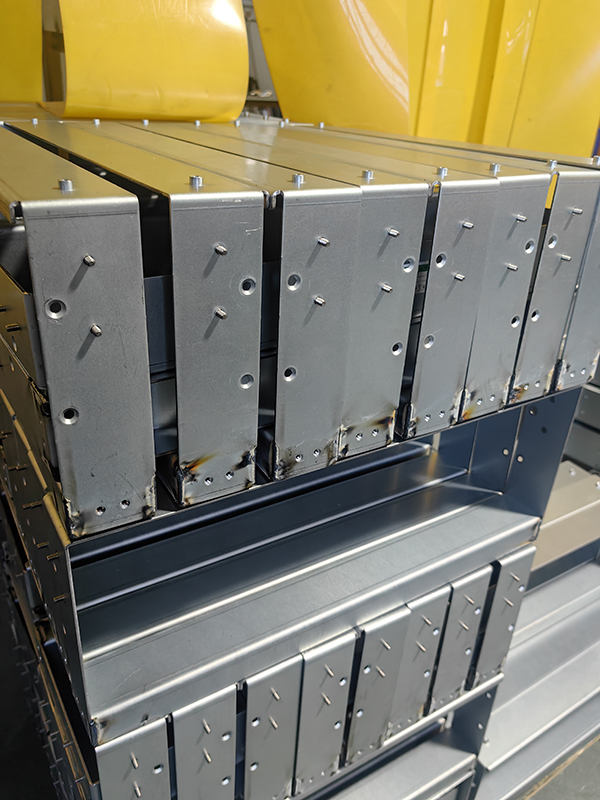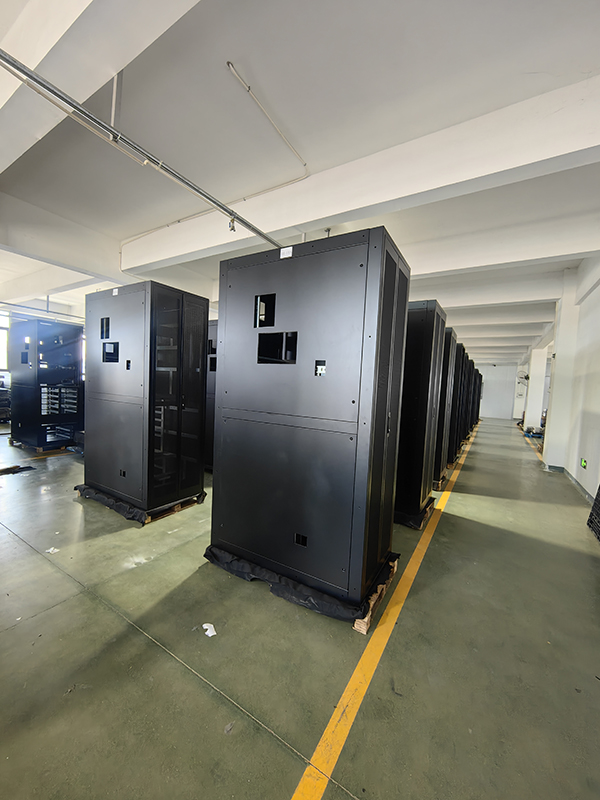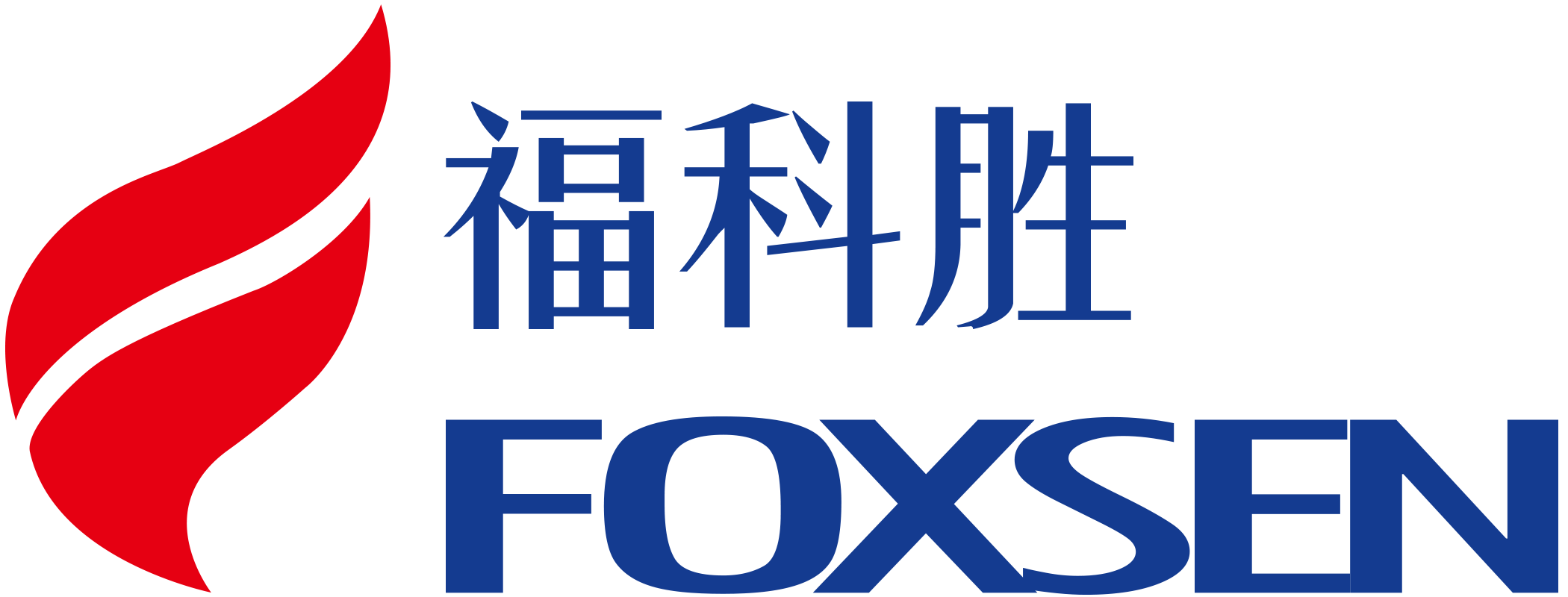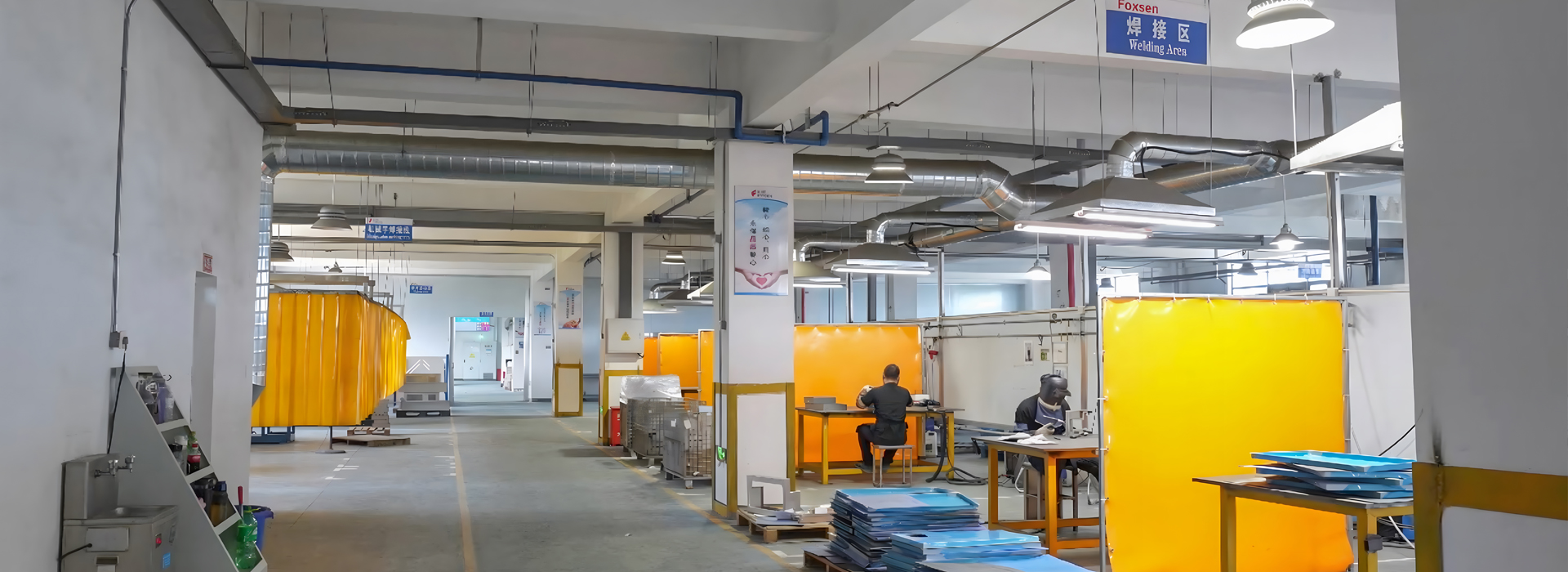
Medical devices require enclosures that ensure safety and maintain reliability. A sheet metal medical enclosure shields equipment from contaminants and electromagnetic interference, protecting both the device and the patient. Manufacturers follow strict regulatory standards, such as ISO 13485, to meet the high demands of the healthcare industry. These standards guarantee that the enclosures perform effectively while complying with safety requirements. By using precise fabrication techniques, you can achieve enclosures that support durability and hygiene in medical environments.
Key Takeaways
Pick materials like stainless steel or aluminum for strength and cleanliness.
Design enclosures to match medical devices, improving use and meeting rules.
Use CAD and models to improve designs, avoid mistakes, and work faster.
Follow ISO 13485 and FDA rules to make safe and good-quality enclosures.
Materials for Sheet Metal Medical Enclosures
Commonly Used Materials in Medical Applications
When choosing materials for a sheet metal medical enclosure, you must consider durability, hygiene, and compliance with medical standards. Metals, ceramics, and polymers are the most common materials used in medical applications. Metals dominate the industry, making up 80% of medical device materials due to their strength, corrosion resistance, and biocompatibility. Ceramics are ideal for implants because they are chemically nonreactive and mechanically hard. Polymers, on the other hand, offer flexibility and are often used for temporary or customizable devices.
For sheet metal medical enclosures, stainless steel, aluminum, and galvanized steel are the most popular choices. Stainless steel stands out for its durability and ability to withstand harsh conditions. Aluminum is lightweight and corrosion-resistant, making it suitable for weight-sensitive applications. Galvanized steel, with its zinc coating, provides cost-effective rust prevention.
Benefits of Stainless Steel and Aluminum
Stainless steel and aluminum are the top contenders for medical enclosures. Stainless steel offers high impact resistance, making it ideal for environments where durability is critical. It also resists corrosion exceptionally well, ensuring long-term performance in medical settings. Additionally, its non-porous surface makes cleaning and sterilization easy, which is vital for maintaining hygiene.
Aluminum, while less durable than stainless steel, excels in thermal conductivity. This property makes it a great choice for enclosures requiring efficient heat dissipation. Its lightweight nature also reduces the overall weight of medical devices, improving portability. However, aluminum's porous surface makes it less suited for sterilization compared to stainless steel.
Material Properties That Meet Medical Standards
To meet medical standards, materials must exhibit specific properties. Corrosion resistance is essential to prevent degradation in sterilizable environments. Durability ensures the enclosure can withstand shocks, vibrations, and other physical stresses. Lightweight materials like aluminum improve usability, while biocompatibility ensures safety for patients and healthcare workers.
Compliance with standards like ISO 13485 and CE certification guarantees that materials meet stringent quality and safety requirements. For instance, stainless steel and aluminum are both compliant with these standards, making them reliable choices for medical enclosures. These materials undergo rigorous testing, including thermal, vibration, and shielding effectiveness tests, to ensure they protect sensitive medical devices from external interferences.
Design and Engineering of Sheet Metal Medical Enclosures
Customization for Medical Device Requirements
Every medical device has unique requirements, and customization plays a vital role in meeting them. You can tailor a sheet metal medical enclosure to fit specific dimensions, accommodate internal components, and provide access points for cables or controls. Customization ensures the enclosure integrates seamlessly with the device, enhancing its functionality and usability.
Additionally, enclosures protect sensitive equipment from external factors like dust, moisture, and contamination. This protection is critical for maintaining device performance and ensuring compliance with medical regulations. By customizing enclosures, you also create opportunities to innovate and adapt to the evolving needs of the healthcare industry.
Key Design Factors: Durability, Hygiene, and Corrosion Resistance
When designing a sheet metal medical enclosure, you must prioritize durability, hygiene, and corrosion resistance. These factors directly impact the enclosure's performance and longevity. For example, stainless steel contains chromium, which prevents rust and corrosion, making it ideal for medical environments. Its non-porous surface also simplifies cleaning, ensuring high hygiene standards.
Durable materials ensure the enclosure withstands physical stresses, while corrosion-resistant properties prevent degradation in sterilizable environments. These features contribute to patient safety by minimizing risks associated with device failure.
Role of CAD and Prototyping in Design Optimization
Computer-aided design (CAD) and prototyping are essential tools for optimizing medical enclosure designs. CAD models allow you to visualize and test designs before creating physical prototypes. This process reduces errors and accelerates development. For instance, CAD simulations help refine designs by identifying potential issues early, saving time and resources.
Prototyping complements CAD by validating the design in real-world conditions. Rapid prototyping techniques, such as 3D printing, enable you to test multiple iterations quickly. This approach ensures the final product meets performance goals efficiently. By combining CAD and prototyping, you can achieve a streamlined design process that enhances device functionality and reduces costs.
By leveraging these tools, you can create enclosures that meet the highest standards of precision and reliability.
Fabrication Techniques for Sheet Metal Medical Enclosures

Cutting Methods: Laser Cutting and CNC Machining
Cutting is the first step in fabricating a sheet metal medical enclosure. It defines the enclosure's shape and ensures precise dimensions. Two popular cutting methods are laser cutting and CNC machining. Each offers unique advantages depending on your project requirements.
Laser cutting uses a focused beam of light to cut through metal with exceptional precision. This method creates clean edges and minimizes material waste. It works well for intricate designs, as the laser can cut as narrow as a fraction of a millimeter. Additionally, the non-contact nature of laser cutting reduces the risk of material distortion, making it ideal for medical enclosures that demand high accuracy.
CNC machining, on the other hand, relies on computer-controlled tools to cut and shape metal. It excels in producing complex geometries and can handle a wide range of materials. While its precision depends on tool quality, CNC machining allows for advanced techniques to achieve detailed designs. By balancing speed and accuracy, you can optimize productivity during fabrication.
Both methods are essential for creating high-quality medical enclosures. Your choice will depend on the complexity of the design and the desired level of precision.
Bending and Forming for Precision Shapes
After cutting, bending and forming shape the metal into the desired structure. These techniques are critical for achieving the precise dimensions and angles required for a sheet metal medical enclosure. You can use press brakes or other forming machines to bend the metal accurately.
Several factors influence the success of bending and forming. Machine variables, such as ram repeatability and deflection, play a significant role in maintaining consistency. Tooling variables, including the dimensional tolerance of punches and dies, also affect the final product. Additionally, material properties like thickness and grain direction impact the bending process.
By controlling these variables, you can ensure the enclosure meets strict medical standards. Proper bending and forming not only enhance the enclosure's structural integrity but also improve its aesthetic appeal.
Welding and Joining Techniques
Welding and joining are the final steps in assembling a sheet metal medical enclosure. These techniques ensure the enclosure's components are securely connected, providing durability and reliability.
Ultrasonic welding is a popular choice for medical enclosures. This method uses high-frequency vibrations to create strong joints without adhesives. It is particularly effective for applications requiring clean and precise assembly. Proper joint design, such as energy-director or shear joints, enhances the strength of the weld. Features like alignment aids and flash containment further improve the quality of the assembly.
By selecting the right welding method and optimizing the process, you can create enclosures that meet the rigorous demands of the medical industry. These techniques ensure the enclosure remains durable and functional throughout its lifecycle.
Surface Finishing: Powder Coating and Polishing
Surface finishing is the final step in fabricating a sheet metal medical enclosure. This process enhances the enclosure's durability, appearance, and resistance to environmental factors. Two common surface finishing techniques are powder coating and polishing. Each method offers unique benefits depending on the specific requirements of the medical device.
Powder Coating: A Durable and Protective Finish
Powder coating involves applying a dry powder to the metal surface, which is then cured under heat to form a hard, protective layer. This method provides a uniform finish that resists scratches, corrosion, and wear. You can choose from a variety of colors and textures to match the aesthetic or functional needs of the enclosure.
Advantages of Powder Coating:
Durability: The cured coating creates a tough surface that withstands physical impacts and harsh environments.
Corrosion Resistance: The protective layer prevents moisture and chemicals from damaging the metal.
Eco-Friendly: Powder coating produces minimal waste and contains no harmful solvents, making it an environmentally friendly option.
Tip: When selecting a powder coating, consider the operating environment of the medical device. For example, enclosures used in sterilization equipment may require coatings that can endure high temperatures.
Polishing: Achieving a Smooth and Hygienic Surface
Polishing is another essential finishing technique, especially for enclosures made from stainless steel. This process smooths the metal surface by removing imperfections, creating a reflective or matte finish. Polished surfaces are easier to clean and maintain, which is crucial for medical applications where hygiene is a top priority.
Benefits of Polishing:
Hygiene: A smooth, non-porous surface reduces the risk of bacterial growth and contamination.
Aesthetic Appeal: Polishing enhances the enclosure's appearance, giving it a professional and high-quality look.
Improved Corrosion Resistance: By eliminating surface irregularities, polishing minimizes areas where corrosion could begin.
Choosing the Right Surface Finish
The choice between powder coating and polishing depends on the enclosure's intended use. If you need a robust and colorful finish, powder coating is the ideal option. For applications requiring high hygiene standards, polishing is the better choice. In some cases, you might even combine both techniques to achieve the desired balance of durability and cleanliness.
By applying the right surface finishing method, you ensure that the sheet metal medical enclosure meets the stringent demands of the healthcare industry. This step not only extends the enclosure's lifespan but also enhances its functionality and safety.
Quality Standards and Compliance in Medical Enclosure Fabrication
Importance of ISO 13485 Certification
ISO 13485 certification is a cornerstone of quality assurance in medical enclosure fabrication. It establishes a comprehensive framework for quality management systems tailored to the medical industry. By adhering to ISO 13485, you ensure that your sheet metal medical enclosure meets stringent safety and performance standards.
Key benefits of ISO 13485 certification include:
Improved device quality and reliability.
Compliance with international standards, enhancing global market access.
Streamlined production processes, reducing delays and improving delivery schedules.
This certification also builds trust with customers and regulatory bodies. It demonstrates your commitment to producing safe and dependable medical devices. Manufacturers like Pinnacle and GMM exemplify this dedication by maintaining ISO 13485 certification, ensuring their products meet rigorous industry expectations.
Tip: Incorporating ISO 13485 into your operations not only enhances product quality but also simplifies compliance with regulations like the EU MDR and FDA 21 CFR 820.
FDA and Other Regulatory Requirements
Compliance with FDA and similar regulatory standards is essential for medical enclosure manufacturing. These regulations ensure that every enclosure is safe, reliable, and suitable for medical use. The FDA enforces strict guidelines under Title 21 of the Code of Federal Regulations (CFR), covering all aspects of device creation.
You must maintain detailed documentation and implement corrective actions to address any issues. Regular audits and inspections ensure ongoing compliance, safeguarding the integrity of your manufacturing processes. By meeting these standards, you protect patients and healthcare providers while fostering trust in your products.
Testing and Inspection for Medical-Grade Products
Testing and inspection are critical for verifying the quality and performance of medical-grade products. These procedures ensure that your sheet metal medical enclosure meets the highest standards of safety and functionality. Various testing methods evaluate different aspects of the enclosure's performance.
These tests help identify potential weaknesses and ensure the enclosure performs reliably in medical environments. For example, biocompatibility testing confirms that materials are safe for patient contact, while environmental testing evaluates durability under sterilization conditions. By conducting thorough inspections, you guarantee that your enclosures meet regulatory requirements and exceed customer expectations.
Note: Regular testing not only ensures compliance but also enhances product reliability, reducing risks associated with device failure.
Applications of Sheet Metal Medical Enclosures

Enclosures for Diagnostic and Imaging Equipment
Sheet metal medical enclosures play a vital role in housing diagnostic and imaging equipment. These enclosures protect sensitive electronics from environmental factors like dust and moisture, ensuring consistent performance. For example, fluoroscopic room barriers require specific lead thickness to reduce stray radiation levels effectively. This ensures patient and operator safety during imaging procedures.
A centralized storage system is another critical feature. It helps organize supplies in imaging suites, improving efficiency and workflow. Additionally, acceptance testing for new equipment ensures quality assurance and compliance with medical standards. This testing establishes baseline performance data, verifying that the enclosure meets stringent requirements.
High-quality enclosures, such as those manufactured by ThermoFab, emphasize the importance of customization and precision in regulated industries. These features ensure that diagnostic and imaging equipment operates safely and effectively.
Housings for Surgical and Monitoring Devices
Surgical and monitoring devices demand enclosures that prioritize precision, durability, and hygiene. CNC machining ensures high accuracy and repeatability, which is essential for surgical tools and instruments. The materials used in these enclosures meet strict hygiene standards, minimizing contamination risks during critical procedures.
Durability is another key factor. Sheet metal enclosures protect sensitive electronics, ensuring long-lasting performance even in demanding environments. Compliance with medical standards guarantees that these housings provide safety and effectiveness. By using these enclosures, you can enhance the reliability of surgical and monitoring devices, ultimately improving patient outcomes.
Key Performance Metrics:
Precision: Ensures accurate housing dimensions for surgical tools.
Durability: Protects electronics from physical damage.
Biocompatibility: Reduces contamination risks.
Compliance: Adheres to stringent medical standards.
Use in Laboratory and Sterilization Equipment
Laboratory and sterilization equipment require enclosures that withstand harsh conditions. These enclosures must resist high temperatures, humidity, and chemical exposure. Stainless steel is a popular choice due to its corrosion resistance and ease of sterilization. Polished surfaces further enhance hygiene by reducing bacterial growth.
In sterilization equipment, enclosures must maintain structural integrity under extreme conditions. For example, autoclaves rely on durable housings to endure high-pressure steam cycles. Laboratory equipment also benefits from enclosures that provide precise temperature control and protect sensitive components.
By using a sheet metal medical enclosure, you ensure that laboratory and sterilization equipment meets the highest standards of safety and performance. These enclosures not only extend the lifespan of the equipment but also contribute to maintaining a sterile environment.
The fabrication of a sheet metal medical enclosure involves a detailed process that ensures safety and reliability. You benefit from compliance with regulatory standards, which guarantees designs meet industry requirements. Material selection directly impacts performance, while design for manufacturability streamlines production and reduces costs. Collaboration with engineers enhances effectiveness, and continuous testing improves quality. These practices make enclosures indispensable for protecting medical devices and maintaining their functionality in healthcare environments.
FAQ
What makes sheet metal enclosures suitable for medical devices?
Sheet metal enclosures offer durability, hygiene, and corrosion resistance. These properties ensure they protect medical devices from environmental factors like moisture and dust. Materials like stainless steel and aluminum meet strict medical standards, making them reliable for healthcare applications.
How do you ensure the enclosures meet medical standards?
You ensure compliance by using certified materials and following regulations like ISO 13485 and FDA guidelines. Rigorous testing, including biocompatibility and stress tests, verifies that the enclosures meet safety and performance requirements.
Can sheet metal enclosures be customized for specific devices?
Yes, you can customize enclosures to fit unique device dimensions, internal components, and access points. Customization ensures the enclosure integrates seamlessly with the device, enhancing functionality and usability in medical environments.
Why is surface finishing important for medical enclosures?
Surface finishing improves durability, hygiene, and appearance. Powder coating protects against corrosion and wear, while polishing creates a smooth, non-porous surface. These finishes ensure the enclosure meets hygiene standards and withstands harsh conditions.
What role does CAD play in designing medical enclosures?
CAD allows you to visualize and test designs before production. It helps identify potential issues early, saving time and resources. By using CAD, you can optimize designs for functionality, compliance, and cost-effectiveness.





